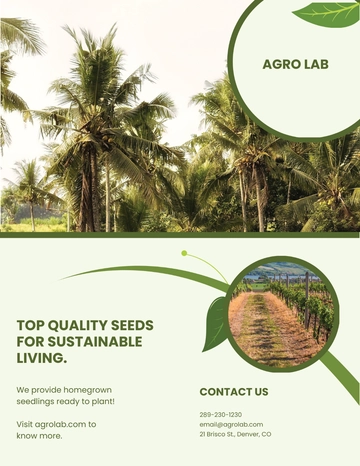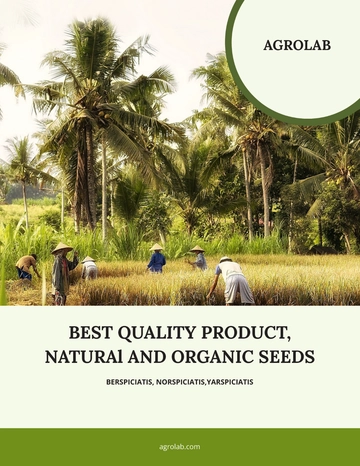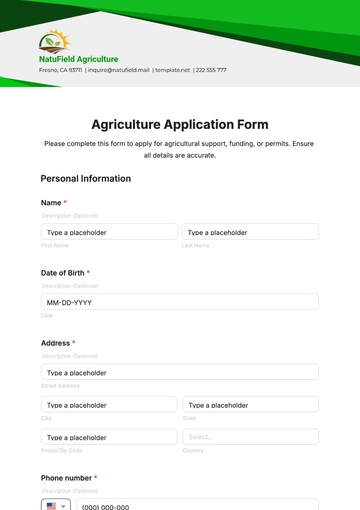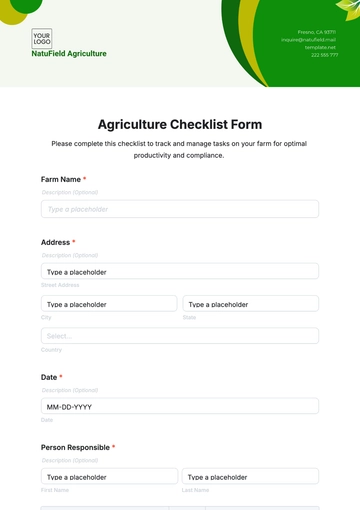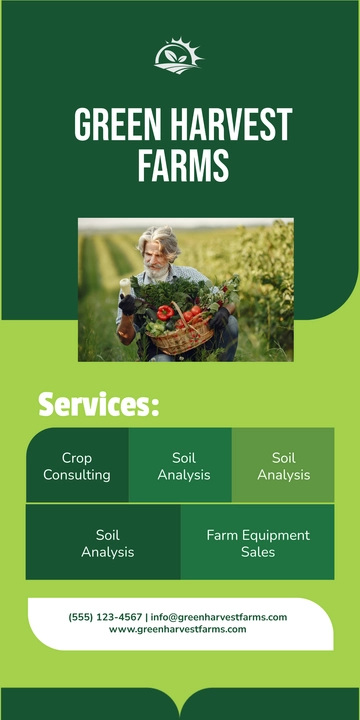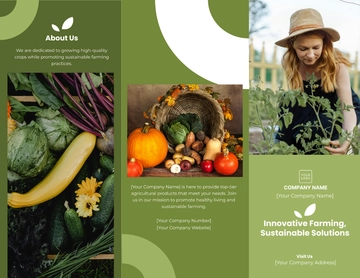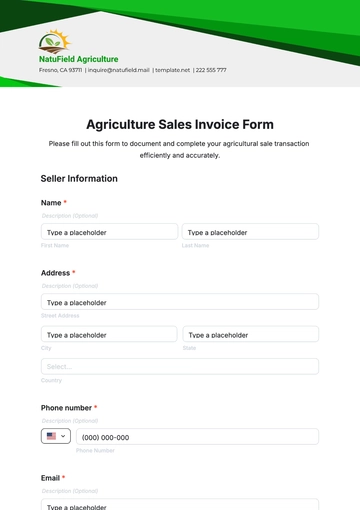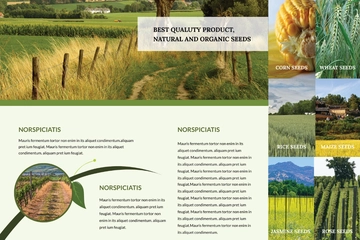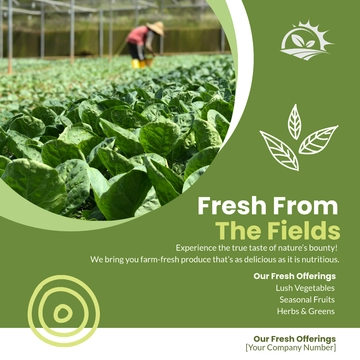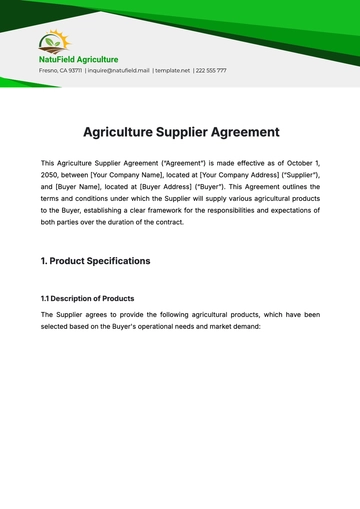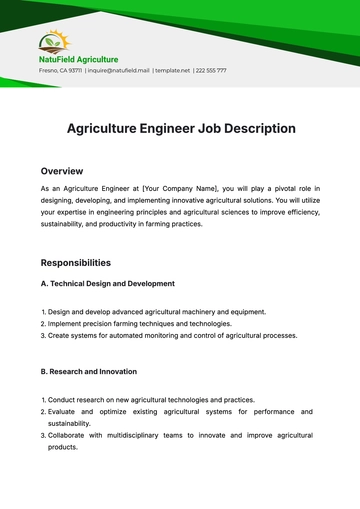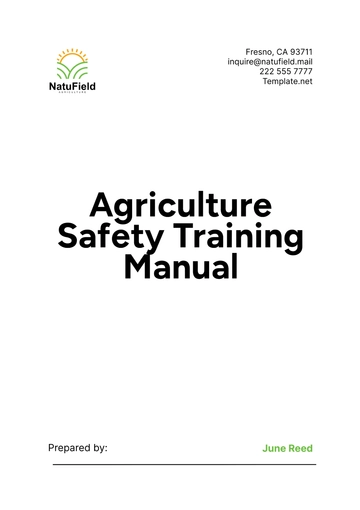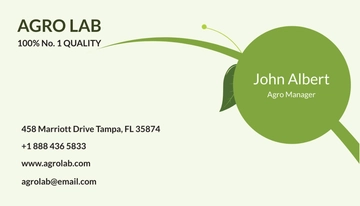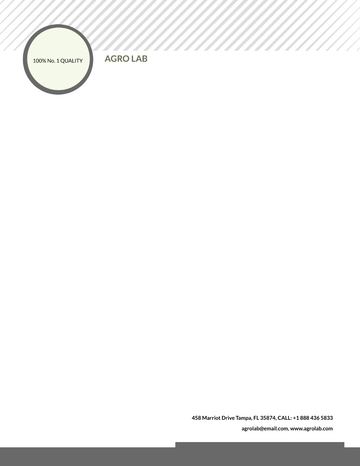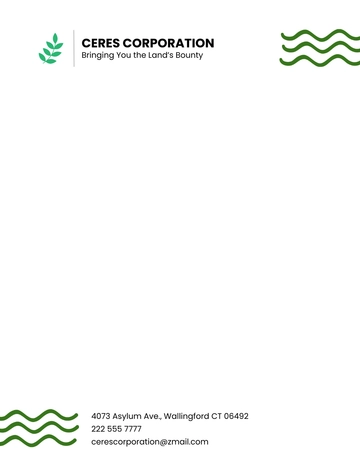Free Agriculture Eco-Compliance Strategy
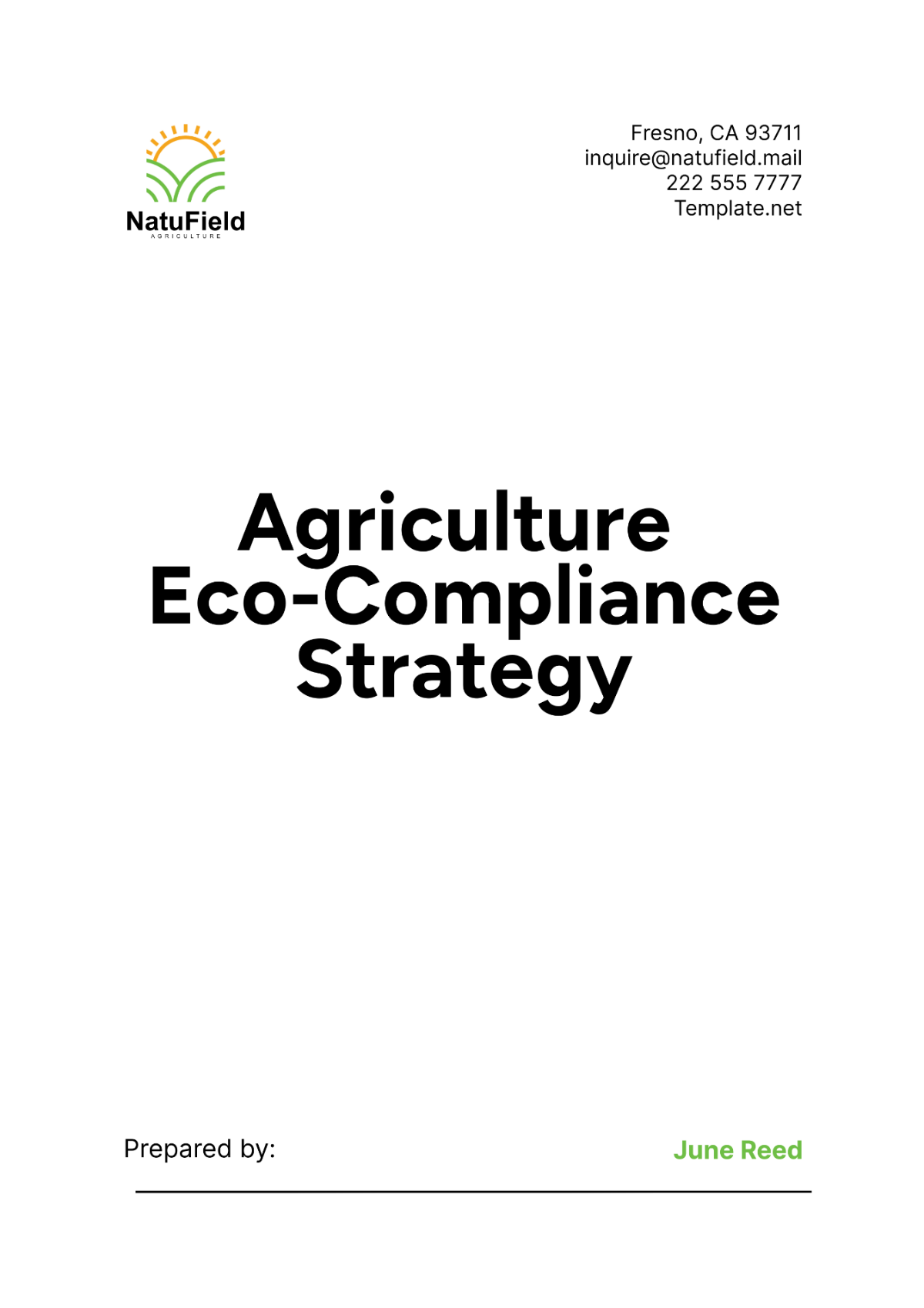
I. Executive Summary
[Your Company Name] is dedicated to promoting sustainable agricultural practices that comply with environmental regulations. This strategy outlines our approach to eco-compliance, focusing on key areas such as resource management, waste reduction, and community engagement. By implementing these strategies, we aim to minimize our environmental footprint while maintaining high productivity.
We will examine current practices, identify areas for improvement, and propose actionable steps to ensure compliance with environmental regulations. Our goal is to align our operations with best practices in sustainability and regulatory standards. Through this strategy, [Your Company Name] aims to achieve significant reductions in these areas, contributing to a healthier environment and more sustainable agricultural practices.
II. Resource Management
A. Water Usage
The following table presents an overview of our current water usage and proposed reduction targets:
Usage Area | Current Usage (Liters) | Target Usage (Liters) | Reduction |
|---|---|---|---|
Irrigation | 1,000,000 | 800,000 | 20% |
Cleaning | 200,000 | 150,000 | 25% |
Processing | 500,000 | 400,000 | 20% |
Total | 1,700,000 | 1,350,000 | 21% |
Irrigation: Currently, our irrigation systems use 1,000,000 liters of water. By implementing more efficient irrigation techniques, such as drip irrigation and scheduling, we aim to reduce this by 20%, bringing the total down to 800,000 liters.
Cleaning: Our cleaning processes consume 200,000 liters of water. We plan to introduce water recycling systems and more efficient cleaning protocols to achieve a 25% reduction, targeting a usage of 150,000 liters.
Processing: Water used in processing is 500,000 liters. By optimizing the use of water in processing stages and integrating water-saving technologies, we aim to reduce usage by 20%, down to 400,000 liters.
Effective water management is crucial for sustainable agriculture. Reducing our water usage not only ensures compliance with environmental regulations but also contributes to the conservation of this vital resource. By implementing these reduction strategies, we can lower our operational costs and support broader environmental goals.
B. Energy Consumption
The following table outlines our current energy consumption and proposed efficiency improvements:
Energy Source | Current Usage (kWh) | Target Usage (kWh) | Reduction |
|---|---|---|---|
Electricity | 2,000,000 | 1,600,000 | 20% |
Fuel | 500,000 | 400,000 | 20% |
Renewable Sources | 300,000 | 500,000 | +66% |
Total | 2,800,000 | 2,500,000 | 11% |
Electricity: Our current electricity consumption is 2,000,000 kWh. By upgrading to more energy-efficient equipment and implementing energy-saving practices, we aim to reduce this by 20%, achieving a target usage of 1,600,000 kWh.
Fuel: We currently use 500,000 kWh equivalent of fuel. Transitioning to more fuel-efficient machinery and alternative fuels can help us reduce this by 20%, bringing it down to 400,000 kWh.
Renewable Sources: We plan to increase our use of renewable energy sources from 300,000 kWh to 500,000 kWh, representing a 66% increase. This shift will significantly reduce our reliance on non-renewable energy.
Optimizing our energy consumption is essential for reducing greenhouse gas emissions and lowering our carbon footprint. By investing in renewable energy and improving energy efficiency, we can ensure compliance with environmental regulations and contribute to global efforts to combat climate change.
III. Waste Reduction
A. Solid Waste Management
The following table provides an overview of our current solid waste generation and proposed reduction strategies:
Waste Type | Current Generation (kg) | Target Generation (kg) | Reduction |
|---|---|---|---|
Organic Waste | 1,500 | 1,200 | 20% |
Plastic Waste | 1,000 | 750 | 25% |
Paper Waste | 500 | 375 | 25% |
Total | 3,000 | 2,325 | 22.5% |
Organic Waste: Currently, we generate 1,500 kg of organic waste. By implementing composting and waste-to-energy initiatives, we aim to reduce this by 20%, achieving a target of 1,200 kg.
Plastic Waste: Our plastic waste generation stands at 1,000 kg. Introducing recycling programs and reducing plastic use in packaging can help us lower this by 25%, targeting a reduction to 750 kg.
Paper Waste: We generate 500 kg of paper waste. By digitizing records and promoting paperless communication, we aim to reduce this by 25%, bringing the total down to 375 kg.
Effective waste management is crucial for minimizing our environmental impact. By reducing solid waste generation and improving recycling efforts, we can comply with waste management regulations and contribute to a cleaner environment. Implementing these strategies also supports our commitment to sustainability and resource conservation.
B. Hazardous Waste Management
The following table outlines our current hazardous waste generation and proposed mitigation strategies:
Waste Type | Current Generation (kg) | Target Generation (kg) | Reduction |
|---|---|---|---|
Chemical Waste | 200 | 150 | 25% |
Pesticide Waste | 300 | 225 | 25% |
Total | 500 | 375 | 25% |
Chemical Waste: Currently, we generate 200 kg of chemical waste. By adopting safer alternatives and improving waste handling protocols, we aim to reduce this by 25%, targeting a generation of 150 kg.
Pesticide Waste: Our pesticide waste generation is 300 kg. Implementing integrated pest management (IPM) practices and using biodegradable pesticides can help us achieve a 25% reduction, lowering it to 225 kg.
Managing hazardous waste is critical for ensuring the safety of our environment and community. By reducing hazardous waste generation and adopting safer practices, we can comply with stringent regulations and protect our ecosystem. These efforts also demonstrate our commitment to responsible and sustainable agricultural practices.
IV. Emissions Control
A. Greenhouse Gas Emissions
The following table presents our current greenhouse gas emissions and proposed reduction targets:
Emission Source | Current Emissions (tons CO2e) | Target Emissions (tons CO2e) | Reduction |
|---|---|---|---|
Fuel Combustion | 1,000 | 800 | 20% |
Fertilizer Use | 500 | 400 | 20% |
Total | 1,500 | 1,200 | 20% |
Fuel Combustion: Our fuel combustion-related emissions are 1,000 tons CO2e. By improving fuel efficiency and transitioning to cleaner fuels, we aim to reduce this by 20%, targeting emissions of 800 tons CO2e.
Fertilizer Use: Fertilizer use contributes 500 tons CO2e to our emissions. Implementing precision agriculture techniques and optimizing fertilizer application can help us achieve a 20% reduction, bringing emissions down to 400 tons CO2e.
Reducing greenhouse gas emissions is essential for mitigating climate change. By implementing these reduction strategies, we can comply with emissions regulations and contribute to global efforts to lower atmospheric CO2 levels. These actions also enhance our reputation as a sustainable and responsible agricultural company.
B. Air Quality
The following table outlines our current air pollutant emissions and proposed reduction strategies:
Pollutant | Current Emissions (kg) | Target Emissions (kg) | Reduction |
|---|---|---|---|
Particulate Matter | 200 | 150 | 25% |
NOx | 100 | 75 | 25% |
Total | 300 | 225 | 25% |
Particulate Matter: Our particulate matter emissions are 200 kg. By adopting cleaner technologies and improving dust control measures, we aim to reduce this by 25%, targeting emissions of 150 kg.
NOx: Nitrogen oxide (NOx) emissions currently stand at 100 kg. Implementing advanced combustion techniques and using cleaner fuels can help us achieve a 25% reduction, lowering it to 75 kg.
Improving air quality is crucial for protecting public health and the environment. By reducing our emissions of particulate matter and NOx, we can ensure compliance with air quality regulations and contribute to cleaner air. These efforts also support our commitment to sustainable and eco-friendly operations.
V. Soil Conservation
A. Erosion Control
The following table presents our current soil erosion rates and proposed mitigation strategies:
Field | Current Erosion (tons/year) | Target Erosion (tons/year) | Reduction |
|---|---|---|---|
Strawberry Field | 50 | 40 | 20% |
Grape Field | 30 | 24 | 20% |
Total | 80 | 64 | 20% |
Strawberry Field: Currently, Strawberry Field experiences 50 tons of soil erosion per year. By implementing cover crops and contour plowing, we aim to reduce erosion by 20%, targeting 40 tons per year.
Grape Field: Grape Field has an erosion rate of 30 tons per year. Using similar soil conservation techniques, we plan to achieve a 20% reduction, lowering it to 24 tons per year.
Effective soil conservation practices are essential for maintaining soil health and preventing land degradation. By reducing soil erosion, we can improve crop yields and ensure the long-term sustainability of our agricultural operations. These efforts also support compliance with soil conservation regulations and contribute to environmental protection.
B. Soil Health Improvement
The following table outlines our current soil health indicators and proposed improvement strategies:
Indicator | Current Level | Target Level | Improvement |
|---|---|---|---|
Organic Matter | 3.0% | 3.5% | 17% |
pH | 6.0 | 6.5 | 8% |
Total | 9.0 | 10.0 | 11% |
Organic Matter: Currently, our soil organic matter content is 3.0%. By incorporating organic amendments and promoting crop rotations, we aim to increase this to 3.5%, representing a 17% improvement.
pH: The current soil pH is 6.0. Through the application of lime and other pH-adjusting practices, we plan to raise the pH to 6.5, an 8% improvement.
Improving soil health is crucial for sustainable agriculture. By enhancing soil organic matter and optimizing pH levels, we can boost crop productivity and resilience. These efforts also contribute to long-term soil fertility and compliance with soil health standards.
VI. Biodiversity Conservation
A. Habitat Protection
The following table provides an overview of our current habitat protection measures and proposed enhancements:
Measure | Current Coverage (hectares) | Target Coverage (hectares) | Increase |
|---|---|---|---|
Buffer Zones | 10 | 12 | 20% |
Wildlife Corridors | 5 | 7 | 40% |
Total | 15 | 19 | 27% |
Buffer Zones: Currently, we maintain 10 hectares of buffer zones. Expanding these areas to 12 hectares, a 20% increase, will provide better protection for surrounding ecosystems.
Wildlife Corridors: We have 5 hectares of wildlife corridors. Increasing this to 7 hectares, a 40% increase, will facilitate wildlife movement and enhance biodiversity.
Protecting habitats is essential for maintaining biodiversity and ecosystem health. By expanding buffer zones and wildlife corridors, we can create a more conducive environment for local flora and fauna. These efforts support compliance with biodiversity conservation regulations and promote sustainable land use.
B. Species Conservation
The following table outlines our current species conservation efforts and proposed improvements:
Effort | Current Investment | Target Investment | Increase |
|---|---|---|---|
Endangered Species | $10,000 | $12,500 | 25% |
Pollinator Support | $5,000 | $6,000 | 20% |
Total | $15,000 | $18,500 | 23% |
Endangered Species: Our current investment in endangered species conservation is $10,000. Increasing this to $12,500, a 25% increase, will enhance our efforts to protect vulnerable species.
Pollinator Support: We invest $5,000 in pollinator support initiatives. Raising this to $6,000, a 20% increase, will strengthen our support for essential pollinator populations.
Conserving species is vital for maintaining ecosystem balance and agricultural productivity. By increasing our investment in endangered species and pollinator support, we can ensure the health of critical populations. These efforts align with biodiversity conservation regulations and reinforce our commitment to ecological stewardship.
VII. Community Engagement
A. Education and Awareness
The following table presents our current community education initiatives and proposed expansions:
Initiative | Current Reach (people) | Target Reach (people) | Increase |
|---|---|---|---|
Workshops | 200 | 300 | 50% |
School Programs | 150 | 225 | 50% |
Total | 350 | 525 | 50% |
Workshops: Currently, our workshops reach 200 people. Expanding this to 300 people, a 50% increase, will enhance community knowledge about sustainable agriculture.
School Programs: Our school programs currently reach 150 students. Increasing this to 225 students, a 50% increase, will promote environmental awareness among the younger generation.
Engaging the community through education and awareness initiatives is crucial for fostering a culture of sustainability. By expanding our reach, we can influence more people to adopt eco-friendly practices. These efforts also support compliance with community engagement regulations and strengthen our relationship with local stakeholders.
B. Collaborative Projects
The following table outlines our current collaborative projects and proposed expansions:
Project | Current Investment | Target Investment | Increase |
|---|---|---|---|
Community Gardens | $5,000 | $7,500 | 50% |
Conservation Groups | $3,000 | $4,500 | 50% |
Total | $8,000 | $12,000 | 50% |
Community Gardens: Our current investment in community gardens is $5,000. Increasing this to $7,500, a 50% increase, will support local food production and community engagement.
Conservation Groups: We invest $3,000 in conservation groups. Raising this to $4,500, a 50% increase, will strengthen our partnerships with organizations dedicated to environmental protection.
Collaborative projects with local communities and conservation groups are essential for achieving shared sustainability goals. By increasing our investment, we can support more initiatives that benefit both the environment and the community. These efforts align with regulatory requirements and demonstrate our commitment to corporate social responsibility.
VIII. Regulatory Compliance
A. Current Compliance Status
The following table provides an overview of our current compliance status with key environmental regulations:
Regulation | Compliance Status | Action Required |
|---|---|---|
Water Quality | Compliant | None |
Air Quality | Partially Compliant | Emission Reduction |
Soil Conservation | Compliant | None |
Waste Management | Non-Compliant | Improve Recycling |
Water Quality: We are currently compliant with water quality regulations. No immediate actions are required, but ongoing monitoring is essential to maintain this status.
Air Quality: Our air quality compliance is partial. Implementing emission reduction strategies is necessary to achieve full compliance.
Soil Conservation: We are compliant with soil conservation regulations. Continued adherence to best practices will help maintain this status.
Waste Management: Our waste management practices are non-compliant. Improving recycling efforts and reducing waste generation are critical steps to achieve compliance.
Maintaining regulatory compliance is fundamental for our operations. By addressing areas of non-compliance and ensuring ongoing adherence to environmental regulations, we can avoid penalties and enhance our reputation as a responsible agricultural company.
B. Future Compliance Goals
The following table outlines our future compliance goals and target timelines:
Goal | Target Timeline |
|---|---|
Achieve Zero Emissions | 2055 |
100% Waste Recycling | 2053 |
Full Water Reuse | 2054 |
Achieve Zero Emissions: Our goal is to achieve zero emissions by 2055. This will involve implementing advanced technologies and practices to eliminate greenhouse gas emissions from our operations.
100% Waste Recycling: We aim to achieve 100% waste recycling by 2053. Enhancing our recycling programs and reducing waste generation will be key to meeting this goal.
Full Water Reuse: Our target is to achieve full water reuse by 2054. Implementing water recycling systems and efficient water management practices will help us reach this milestone.
Setting ambitious compliance goals demonstrates our commitment to sustainability and continuous improvement. By striving for these targets, we can position [Your Company Name] as a leader in eco-compliance and sustainable agriculture.
IX. Conclusion
This Agriculture Eco-Compliance Strategy of [Your Company Name] outlines comprehensive measures to ensure regulatory compliance and promote sustainability. By focusing on resource management, waste reduction, emissions control, soil conservation, biodiversity conservation, community engagement, and regulatory compliance, we aim to minimize our environmental impact and enhance our operations.
Implementing these strategies will require ongoing commitment and collaboration across all levels of our organization. By achieving our compliance goals and continuously improving our practices, [Your Company Name] can contribute to a more sustainable future for agriculture and the environment.
- 100% Customizable, free editor
- Access 1 Million+ Templates, photo’s & graphics
- Download or share as a template
- Click and replace photos, graphics, text, backgrounds
- Resize, crop, AI write & more
- Access advanced editor
Ensure regulatory compliance with our Agriculture Eco-Compliance Strategy Template from Template.net! This template features editable sections to tailor the strategy to your specific compliance requirements. Customizable fields enable you to integrate your business branding. The AI Editor Tool streamlines the process, ensuring effective strategy creation tailored to your eco-compliance needs!
